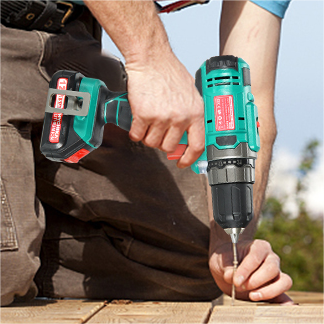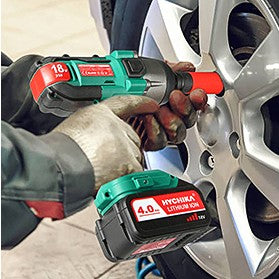This checklist is a guideline for HYCHIKA engineer how to select a motor, that is the theoretically basic in the DC permanent magnet motors only. Always refer to vendors for complete details of the electrical specifications and physical dimensions of the motor with their production tolerances.
How to Select a DC Motor
To make a proper motor selection, the following steps should generally be taken.
1.Size of the motor. There are two factors determine the size of the motor. First is the drill housing size and second, the performance of the motor. The first one is obvious, you cannot put a large motor on a small housing. For the second point, under a same supply voltage, a larger motor can provide larger output torque and speed.
2.Based on the performance curves given at the different voltages, your selection should be made on some substitute models that basically perform near the highest efficiency point in RPM, Current Drain and Torque to achieve the most desirable function in the design application.
3.Make final selection to fix the voltage and motor out of the above substitutes by meeting the critical needs and subordinating the others among such factors related to the application as cost, size, weight, environment and service life for motor and power source, etc…
4.To affirm the suitability of the selected motor, utilizing a prototype of the product, one of the easiest ways is to measure the current drain of the motor running under load in the prototype. If the current drain of the motor corresponds to that shown at the highest efficiency point of the performance chart, the motor selected is correct.
How to Read the Performance Chart
The performance chart shows the performance of the motor. It included four performance curves – Speed (N), current (I), power output (P) and efficiency (E). The following briefly explain how to obtain those values by the curves in figure 1.
1.Torque is known: Draw a vertical line from the base torque line at the point of known torque T. Where this line intersects with the N, I and P curves get these values by their vertical scales.
2.Torque is unknown: First measure the current drain by an ampere meter, then put the point of the measured value on the I curve, and draw a vertical line passing on the point. Now the other values can be obtained by the same way as (1).
3.Speed is known: Do the same way as in (2).

Figure 1. An example of motor performance curves (See remarks 1).
All the performance curves shown in above are for fixed supply voltages. The performance curves, when the supply voltage is different from the rated voltage shown in the catalogue, can be obtained as illustrated in Figure 2.

Figure 2.
The no-load speed and the stall torque are proportional to the supply voltage. The dotted line in figure 2 shows the speed line at 2/3 of the rated voltage as an example. The stall current comes down to I’s from Is (Remarks 2).
Remarks
1. More about the four performance curves.
(a) Speed of the motor (N) decreases Output Torque (T) and Current (I) increase.
As the motor runs, current I flows through the rotor which has resistance R. On the other hand, speed voltage (Back e.m.f.) Vc is induced in the rotor proportional to the rotor speed.
Hence the supply voltage V has the relation,
V = Vc + IR that is,
I = (V – Vc)/R … (1)
Now if the speed of the motor decreases, torque increases and we have smaller Vc, hence, by equation (1), the current I will increase.
This explains the fact that current I is inversely proportional to the speed N in the performance curves. As a feature of the permanent magnet motors, the curves of speed N and current I to torque T are linear. Consequently, the speed goes straight from No at no-load down to zero at stall torque Ts (Which is maximum) in Figure 1. Current I goes from Io up to Is (Is = V/R) in the same way.
(b)Power output (P) is the product of speed (N) and torque (T). The maximum point (Pmax) occur at T = Ts/2 and calculated as Pmax = No x Ts/4.
(c)Efficiency (E) is the ration of the mechanical output to the electrical input and is expressed as, E(%) = P / V. It comes to maximum in the torque range less than Ts/2 and the current I at the maximum efficiency is given by,
Therefore, the maximum efficiency point comes nearer to the left when the value of k is smaller, so it is preferable for a motor to have smaller Io which is a function mainly of the loss torque due to the iron losses and frictional ones.
2.
Stall current (Is) VS different voltage supply.
The torque T produced by a rotor is expressed as,
T = k’· · I · n
Where k’ is a constant, is the magnetic flux passing through the rotor, and n is the number of turns of wound wire of the rotor.
From the above relations, it is recognized that the current I is only dependent on the torque T in the same motor regardless its supply voltage. Consequently, the current I line stays as before, but the stall current comes down to I’s from Is in figure 2.



